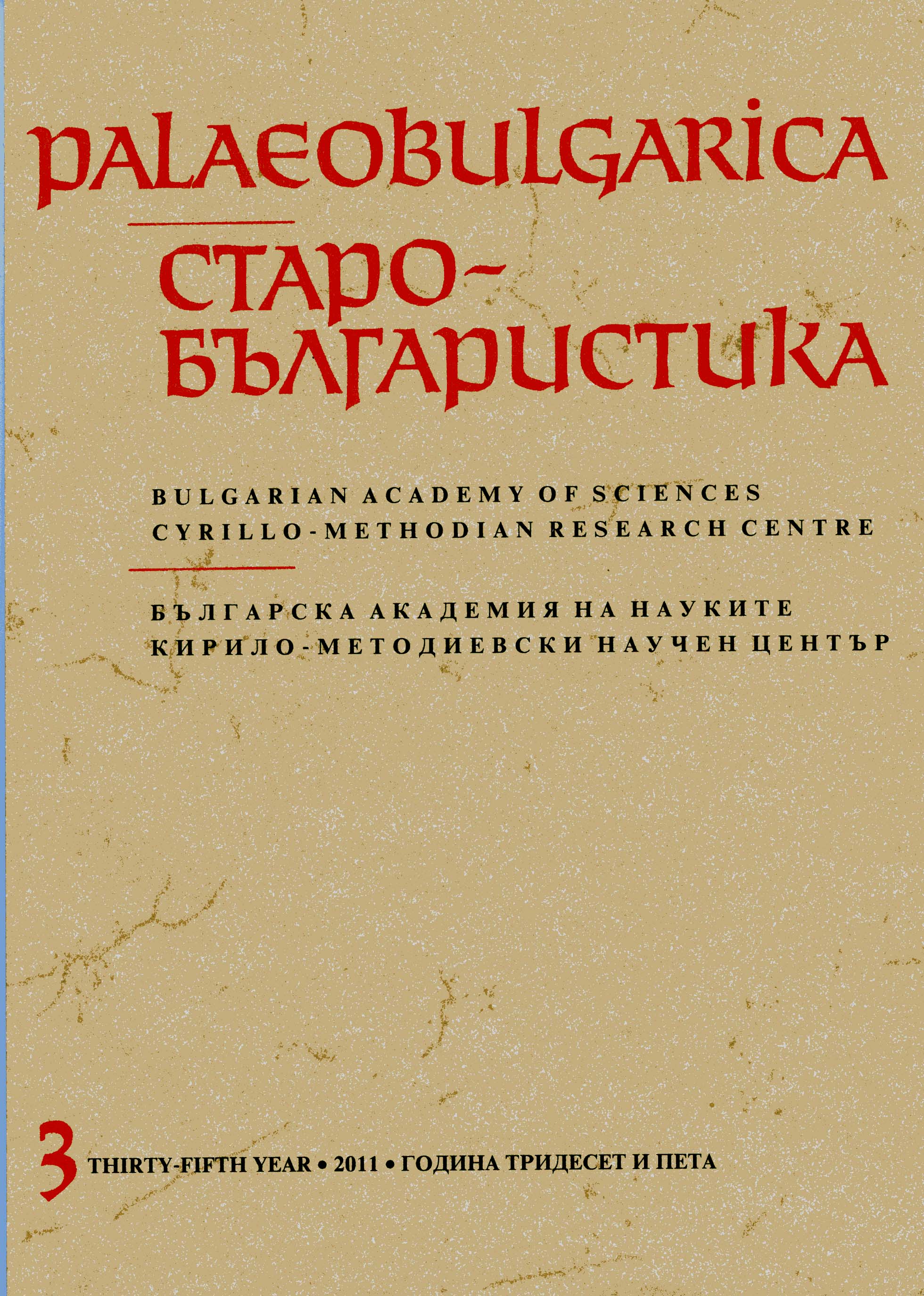О списке „Апокалипсиса" Псевдо-Мефодия („Откровения Мефодия Патарского о последних временах“) Государственного архива в Бухаресте
On a Copy of Pseudo-Methodius of Patara's Apocalypsis from the National Archive in Bucharest
Author(s): Małgorzata SkowronekSubject(s): Language and Literature Studies
Published by: Кирило-Методиевски научен център при Българска академия на науките
Summary/Abstract: The manuscript no. 741 of the National Archive in Bucharest, partially damaged, is a miscellanea described as written in the 16th с and containing Old and New Testament "apocryphal texts", popular pseudocanonical literature, homilies by St John Chrysostom, as well as the palaea historica and a text similar to the palaea interpretata. Among the texts in the manuscript there is a copy of Pseudo-Methodius of Olympos' Apocalypsis (ff. 33v-60v). Different variants and redactions of the text have been published at least (in whole and in fragments) ten times since the first edition by N. S. Tikhonravov in 1863. However, it should be emphasized, that - apart from V. M. Istrin in the last decades of the 19th с - only contemporary scholars have paid particular attention to this literary monument of Medieval times. So far three Slavic translations have been pointed out, and two of them can be attributed to the production of the Preslav literary school in the times of the First Bulgarian Empire. The first translation, acknowledged as a 'free' one, comes from the 9th - 10th c; the second, originating also in the 10th c. (tsar Peter's times), is called 'a literal translation'; the third is dated to the first half of the 14th с Apart from that, 'combined, mixed' variants are said to have originated on the basis of the first translation. At the same time, new editions of newly discovered copies are published; the most important seems to be the second translation, published by F. J. Thomson in 1985, from the ms. Copenhagen 149. However, the Apocalypsis from the ms 741 is an unknown type of the text. In general, it looks like originating from the same source as the first Slavic translation, but it's not similar to any of the variants published up to now. It is characterized by many differences - mostly in syntax, but it also shows some lexical peculiarities. Moreover, ms 741 contains two fragments not recorded in other variants. While the first one is a description of the devil, or maybe of polytheism personalized, the second is a very specific story of Melchisedec, familiar rather from old Syriac or Greek narratives (as in The Cave of Treasures) about the patriarch. It is difficult to explain the many peculiarities of the text - are they the result of the copyist's ingeniousness, or an effect of copying from an unknown protograph of the Apocalypsis, or is it even a new translation? It seems reasonable to describe the copy of the Apocalypsis in the ms 741 as an unknown variant of this text, and this is the reason for a critical edition of it with variant readings from two other copies that are textologically most similar (Istrin's edition and a 16th с copy from the Serbian National Library in Belgrade, no.40,ff. 195-226v).
Journal: PALAEOBULGARICA / СТАРОБЪЛГАРИСТИКА
- Issue Year: 2011
- Issue No: 3
- Page Range: 74-115
- Page Count: 42
- Language: Russian
- Content File-PDF

